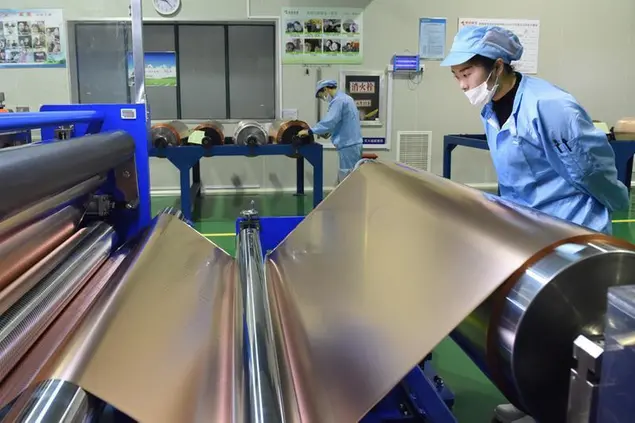PHOTO
(The opinions expressed here are those of the author, a columnist for Reuters.)
LAUNCESTON, Australia - The massive overhang of copper in China is starting to work its way through the global market dynamics for the industrial metal, with prices easing and trade flows likely to adjust.
Stockpiles have surged this year in China, which imports about 60% of global traded copper, carrying inventories registered with the Shanghai Futures Exchange (ShFE) to a 51-month high of 339,964 metric tons in the week to June 7.
Stockpiles in China usually follow a distinct seasonal patter, with strong builds at the start of the year, followed by equally rapid drawdowns from about March onwards.
However, this year is different, with ShFE warehouses continuing to see huge inflows at a time when they are normally shipping metal out.
There are several dynamics at work in this unusual build of copper stockpiles in China, including the struggles of key sectors that consume the metal, such as housing construction and manufacturing.
Despite Beijing's stimulus efforts, the property sector has yet to stage a meaningful turnaround, and manufacturing is also uncertain, with the key Purchasing Managers' Index unexpectedly dropping in May to 49.5, below the level of 50 that separates expansion from contraction.
Despite the cloudy outlook for domestic demand in China, imports of unwrought copper have remained robust, with 514,000 tons arriving in May, up 17.4% from April and 15.8% from the same month in 2023.
For the first five months of the year, China's refined copper imports were 2.327 million tons, a gain of 8.8% from the corresponding period a year earlier.
Some of the import strength is probably due to increased imports from Russia, most probably at a discount, as Russian copper can no longer go to its previous major buyers in Europe, because of Western sanctions imposed after its invasion of Ukraine.
At the same time that China was importing more copper, it was also buying more ore and concentrate and boosting domestic production of refined metal.
Refined copper output was 1.14 million tons in April, up 9.2% from the corresponding month in 2023, official data showed.
The increase came despite a pact by top smelters to cut production in order to curb losses, amid fears of a shortage of raw material following the closure of the Cobre mine in Panama.
Imports of copper ores and concentrates did slip in May, dropping 3.6% to 2.264 million tons from April's 2.348 million, but are still up 2.7% in the first five months, suggesting the squeeze on raw materials may not be as bad as feared.
ADJUSTING FLOWS
At the same time that China was amassing its stockpile, the rest of the world was engulfed in what now appears to have been a bit of irrational exuberance, as the London benchmark contract hit a record high of $11, 104.50 a ton on May 20.
Part of the price surge related to a short squeeze in the United States, with traders scrambling to find enough copper to cover positions.
But now the physical market is likely to catch up to what has happened in the paper market.
While Chinese and Russian copper will not go to the United States, it is likely that copper from other producers will, and China will pare back imports of refined metal.
Chinese exports are also likely to increase after a modest start to the year, which saw exports of copper cathodes coming in at 283,978 tons in April, down 14.8% from the corresponding month in 2023.
That followed a reduction of 14.9% in March exports, although cathode shipments in the first two months were up 20.6% on the year.
Overall, it is likely that China's imports of refined copper may ease in coming months, although what may be more marked is a shift in where the metal is coming from, with arrivals from Russia expected to remain elevated.
It is also likely that China's surplus metal will find its way to global markets over time, which in turn should result in the London copper price continuing to stabilise at levels closer to around $10,000 a ton, with the contract having ended at $9,944.50 on Wednesday.
The opinions expressed here are those of the author, a columnist for Reuters.
(Editing by Clarence Fernandez)
